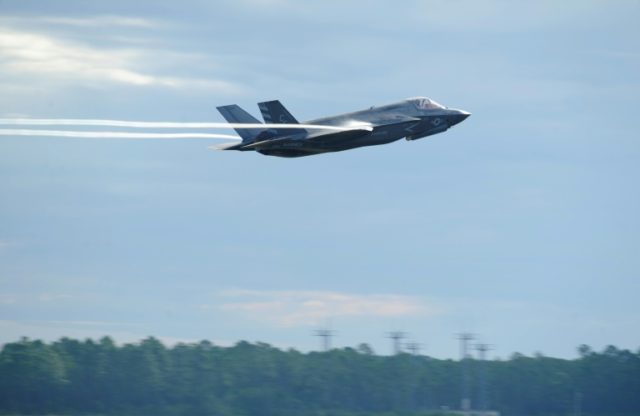Washington (AFP) – Lockheed Martin and the Pentagon on Friday said the next batch of F-35 stealth fighters, the most expensive planes in history, will be produced at a reduced cost.
They announced $728 million in savings after President Donald Trump publically upbraided Lockheed over “out of control” costs, although most of the savings were already planned ahead of his involvement, during a months-long contract negotiation.
The next production run of 90 F-35s will see the Air Force version of the plane, the F-35A, produced at a unit cost of $94.6 million, marking a 7.3 percent reduction from an earlier batch and pushing the price per plane below $100 million for the first time.
“President Trump’s personal involvement in the F-35 program accelerated the negotiations and sharpened our focus on driving down the price,” Lockheed said in a statement.
“The agreement was reached in a matter of weeks and represents significant savings over previous contracts.”
With a current development and acquisition price tag already at $379 billion for a total of 2,443 F-35 aircraft — most destined for the Air Force — the F-35 is the most expensive plane in history, and costs are set to go higher still.
Once servicing and maintenance costs for the F-35 are factored in over the aircraft’s lifespan through 2070, overall program costs are expected to rise to $1.5 trillion.
Pentagon F-35 program head Lieutenant General Chris Bogdan said the agreement was a “good and fair deal for the taxpayers, the US government, allies and industry.”
The F-35 is also produced in versions for the Marine Corps and Navy.
The Marine model, the F-35B, will now be produced at a unit cost of $122.8 million, a 6.7 percent reduction.
The Navy’s F-35C will cost $121.8 million, down 7.9 percent.
Lockheed also said the deal would create 1,800 new jobs at its factory in Fort Worth, Texas.
Production costs often trend downward on large military orders as economies of scale and other factors kick in.
Proponents tout the F-35’s radar-dodging stealth technology, supersonic speeds, close air-support capabilities, airborne agility and a massive array of sensors giving pilots unparalleled access to information.
But the program has faced numerous setbacks, including a mysterious engine fire in 2014 that led commanders to ground planes until the problem could be resolved.

COMMENTS
Please let us know if you're having issues with commenting.